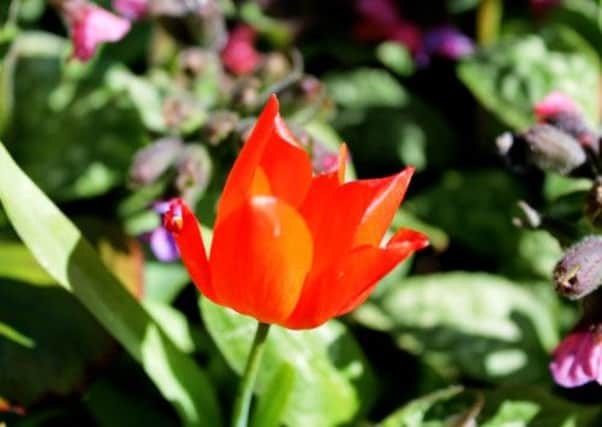Colour for the cold months


Which is where mixed pots of spring bulbs and winter bedding come in to the equation. By layering different types of bulbs at various levels, you can increase the length of flowering display.
There’s still time to create the perfect bright and breezy pot – pop a decent compost in the bottom and position daffodils about 3cm (1ins) apart at this deepest layer.
Advertisement
Hide AdAdvertisement
Hide AdAfter adding some more compost, place some early tulips, such as ‘Red Riding Hood’ at this middle layer and repeat the process with some crocus. To complete the display and to provide colourful flowers for most of the winter, top off the pot with flowering bellis or winter pansies and violas.
Window boxes can be give the same treatment or you could try something completely new and use winter heathers to provide long-lasting colour. Because they are acid-lovers, ensure you use the right compost – nothing alkaline, thank you.
As outdoor tomatoes finish fruiting in pots and growing bags, it’s time to remove them from their containers and dump what’s left on the compost heap. When emptied, these growing bags can be re-used during the winter if you sow seeds of radish, lambs lettuce and other salad leaves, such as rocket and land cress.
If you have been growing tender exotic plants on your patio you’ll need to find them a protected place for winter survival. A heated conservatory or porch is ideal, but at a pinch an unheated greenhouse could be sufficient if you wrap up your plants well.
Advertisement
Hide AdAdvertisement
Hide AdPots can be wrapped in a couple of layers of bubble wrap to provide insulation for the roots, but plant stems need to have the potential for air movement to prevent the stems from rotting off.
The easiest way to do this is to push three or four canes into the outside edge of the pot and create a circular cage of chicken wire attached to the supports. Then it’s a simple matter of pushing dry straw into the cage to insulate the stem and growing point from the harshest of winter frosts.
It won’t look pretty, but it could be the difference between life and death.